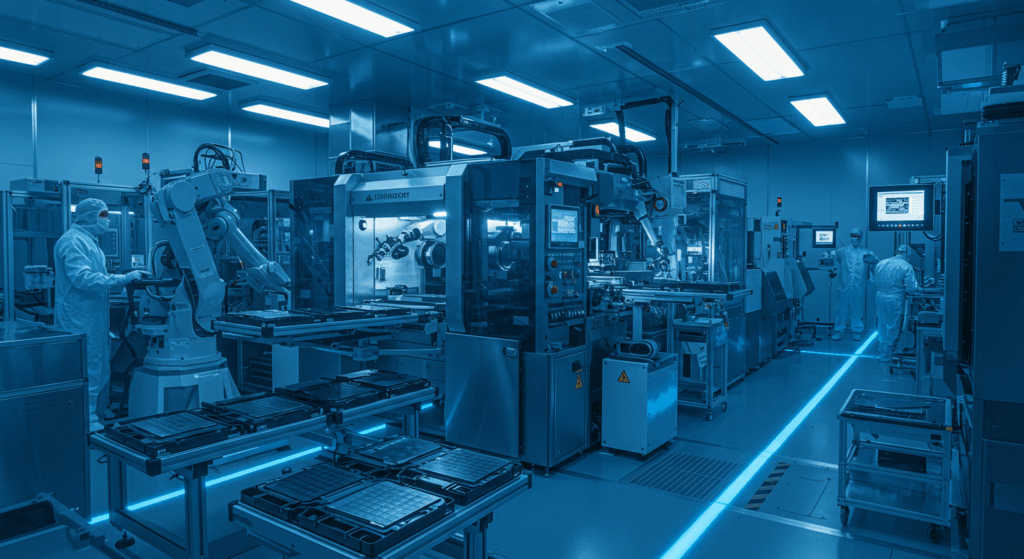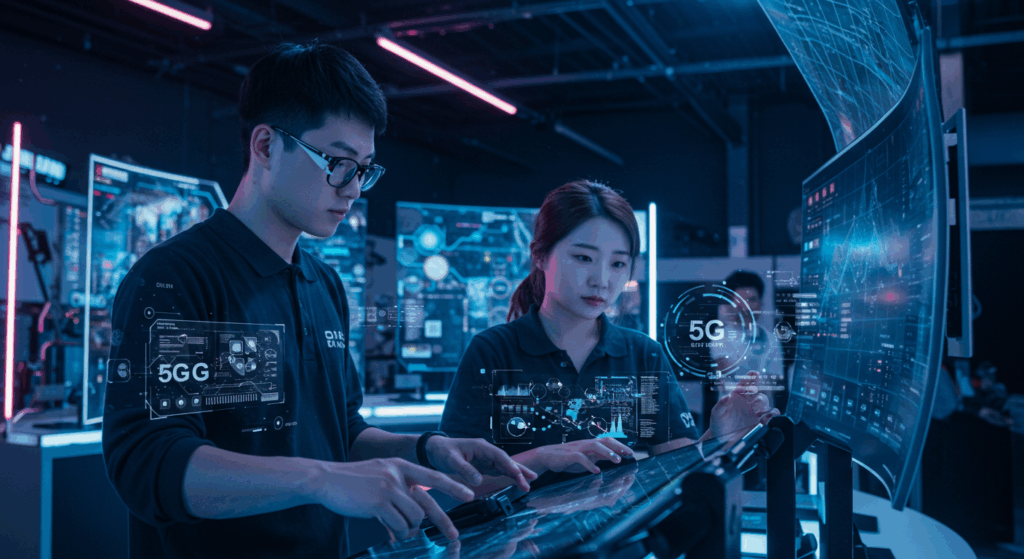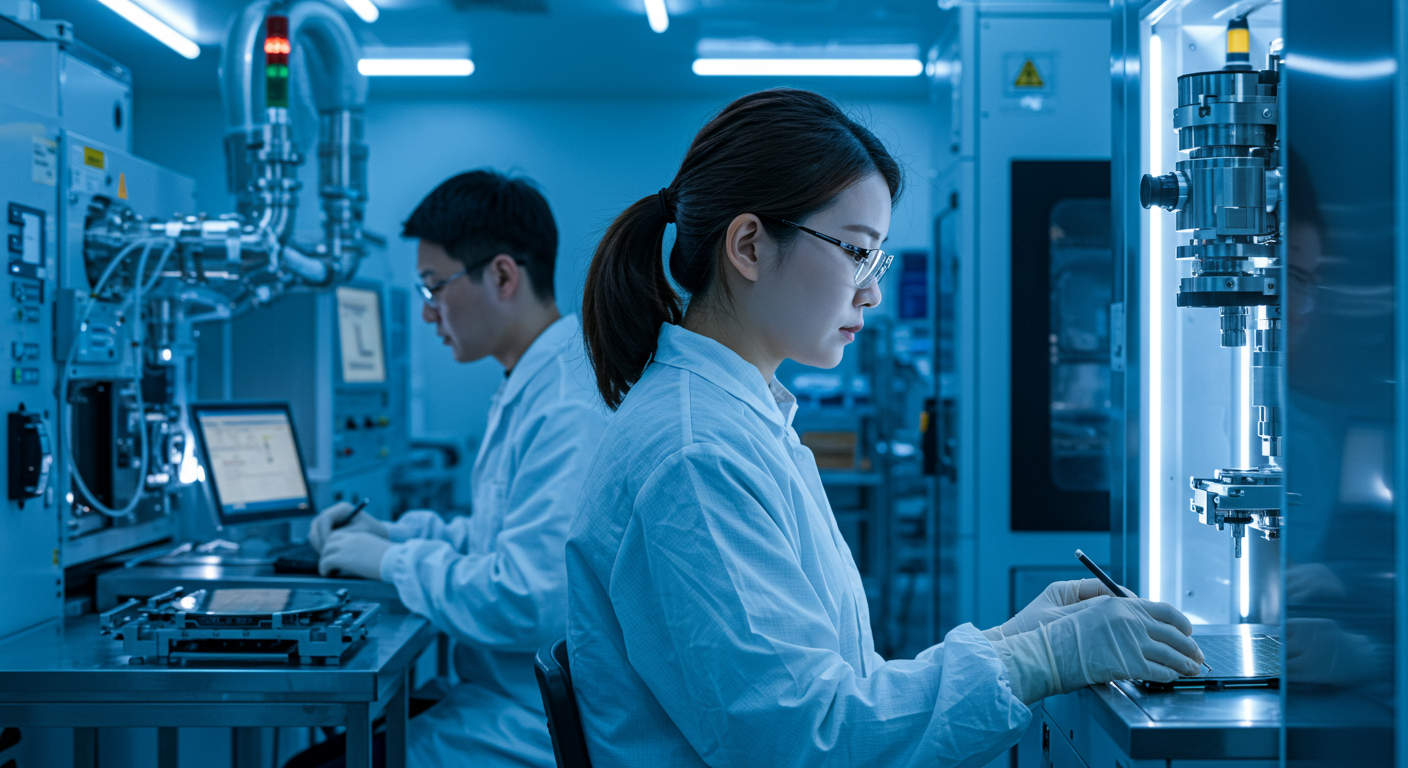How Did Korea Become a Semiconductor Powerhouse?
If you’re using a smartphone, driving a modern car, or reading this on a screen—there’s a good chance a Korean-made semiconductor is inside.
Just 50 years ago, Korea was still recovering from war and poverty. My parents often told me how little technology or infrastructure was available back then. And now?
Samsung Electronics and SK Hynix—two of the world’s top memory chipmakers—are Korean companies.
This transformation wasn’t accidental. It was built on:
- Government-led R&D investment during the 1980s and 90s
- Education systems focused on science and engineering
- Strategic partnerships with U.S. and Japanese tech giants
- A “can-do” manufacturing mindset and relentless execution
These factors positioned Korea as the #1 exporter of memory chips in the world.

Samsung & SK Hynix: Leading the Global Chip Market
A few years ago, I visited Samsung’s semiconductor campus in Suwon. What impressed me wasn’t just the scale—it was the precision. Cleanrooms, automated production lines, and thousands of engineers moving like clockwork.
As of 2024, the numbers speak for themselves:
| Company | Global Rank | Specialty | Market Share (DRAM) |
|---|---|---|---|
| Samsung | 1st | DRAM, NAND, Foundry | ~45% |
| SK Hynix | 2nd | DRAM, NAND | ~28% |
These two companies supply chips to Apple, Google, Amazon, NVIDIA, and countless global tech leaders.
Korea’s Competitive Edge in the EV Battery Boom
Batteries are the new oil—and in the age of electric vehicles, Korea is one of the biggest drillers.
LG Energy Solution, Samsung SDI, and SK On all rank among the world’s top 5 EV battery producers. Nations across Europe, Southeast Asia, and the U.S. rely heavily on Korean battery technology.
I still remember seeing Korean battery innovations at CES. The energy density, safety features, and charging speeds were on another level. One engineer even joked:
“Korean batteries are like Korean dramas—addictive and top quality.”

K-Tech Expands into Displays, AI & 5G
Korean tech isn’t just about chips and batteries.
- OLED Displays by Samsung and LG dominate the global smartphone and TV markets
- AI & robotics are booming, with companies like Naver and Kakao developing large-scale language models
- 5G infrastructure built by Samsung is already deployed across the U.S. and Europe
What’s truly exciting is how these technologies are converging.
We’re already seeing AI-powered smart factories, AR/VR displays, and autonomous delivery robots being piloted in Korean cities.
Korea’s Strategic Tech Vision for the 4th Industrial Revolution
Korea isn’t just keeping up with change—it’s leading it, with bold investments in next-gen technologies:
- A $450 billion semiconductor investment plan by 2030
- A national AI strategy to become a global top-5 AI powerhouse
- Green energy initiatives tied to battery and hydrogen R&D
- Smart cities and quantum computing pilot zones
At a recent tech forum in Seoul, the phrase I heard over and over again was “technology independence.”
It’s not just about exporting products—it’s about shaping the future of innovation.
In Closing: How Korea Is Changing the World Through Innovation
From a war-torn nation to a global leader in semiconductors, batteries, and AI—Korea’s rise is no coincidence.
It’s the result of vision, resilience, and relentless innovation.
“Korea may be small in size, but it thinks and builds on a global scale.”
One chip, one battery, one breakthrough at a time—that’s the K-Tech way.
🔗 Watching Korea’s Story Together, One Series at a Time
